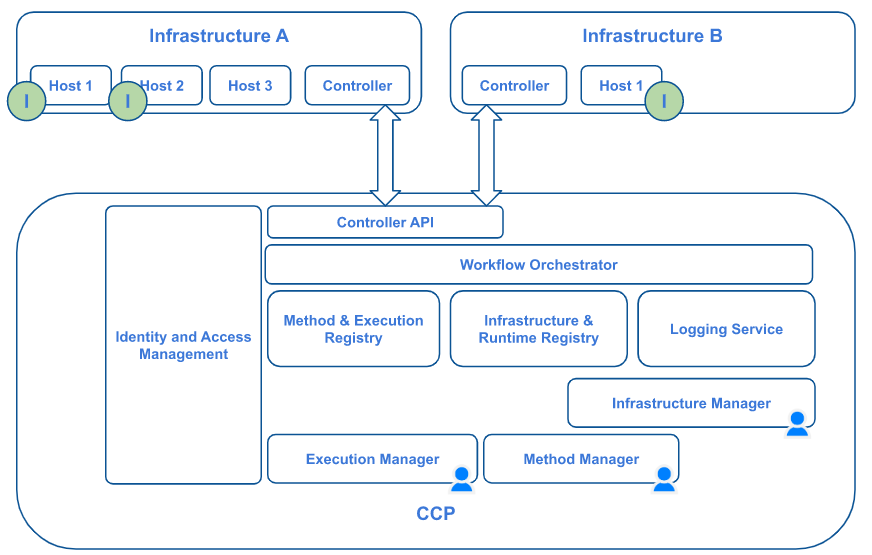🧱 CCP Platform Architecture
This page provides an overview of the logical architecture and vision behind the Cloud Computing Platform (CCP).
🧭 Logical Vision
The figure below illustrates the high-level structure and conceptual layers of CCP:

From bottom to top:
Infrastructure
Physical or virtual resources such as VMs, clusters, storage, and networks.Runtimes
Pre-configured execution environments (e.g., Docker containers, VM images).Methods
Encapsulated algorithms or computational steps.
Users can define new ones or reuse/share existing ones.Workbench
Interfaces that execute and compose methods (e.g., Jupyter, R scripts, dashboards).
🔁 Experimentation vs Consolidation
Experimentation:
Creating and configuring new Runtimes and Methods to support research or exploratory tasks.Consolidation:
Turning dynamic assets into stable, reusable components (e.g., bundling Methods into Runtimes).
🧬 CCP Logical Architecture
This figure highlights the distributed architecture and execution flow of CCP:

Key components:
Infrastructures
External computing environments (laptops, clusters) where executions happen.Hosts
Physical or virtual servers responsible for running containerized executions.Controllers
Agents installed on infrastructures.
They communicate with CCP, receive tasks, and execute methods.Registries
Datastores tracking Methods, Executions, Infrastructures, and Runtimes.Frontend UI Components
Let users interact with all entities (methods, executions, infra) via visual tools.Logging Service
Delivers real-time notifications about status updates, errors, and execution progress.Workflow Orchestrator
Manages the logic behind complex execution flows and tracks state.IAM (Identity & Access Management)
Provides security, ownership attribution, and auditing.